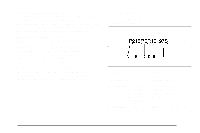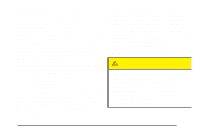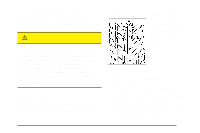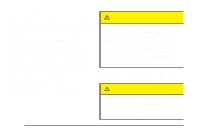2004 Chevrolet Corvette Owner's Manual - Page 304
2004 Chevrolet Corvette Manual
Page 304 highlights
The valve stems on your extended mobility tires have sensors that are part of the Tire Pressure Monitor (TPM). See Tire Pressure Monitor Operation (Except Z06) on page 5-64. The TPM sensors contain batteries which are designed to last for 10 years under normal driving conditions. See your dealer if you ever need to have a wheel replaced, or if the sensors ever need replacement. Notice: Using liquid sealants can damage the tire valves and tire pressure monitor sensors in your extended mobility tires. This damage would not be covered by warranty. Don't use liquid sealants in your extended mobility tires. If you feel that winter tires are needed for your driving conditions, Goodyear Eagle M+S EMT tires are available in your original equipment sizes from an authorized Goodyear EMT retailer. These tires will improve snow traction while maintaining your vehicle's extended mobility feature. When using winter tires on your vehicle, be sure to use them on all four wheels. See Buying New Tires on page 5-66. Inflation - Tire Pressure The tire and loading information label, shows the correct inflation pressures for your tires when they're cold. "Cold" means your vehicle has been sitting for at least three hours or driven no more than 1 mile (1.6 km). See Loading Your Vehicle on page 4-33, for the location of your vehicle's tire and loading information label. Notice: Don't let anyone tell you that underinflation or overinflation is all right. It's not. If your tires don't have enough air (underinflation), you can get the following: • Too much flexing Too much heat Tire overloading Bad wear Bad handling Bad fuel economy If your tires have too much air (overinflation), you can get the following: • Unusual wear • Bad handling • Rough ride • Needless damage from road hazards 5-62
















